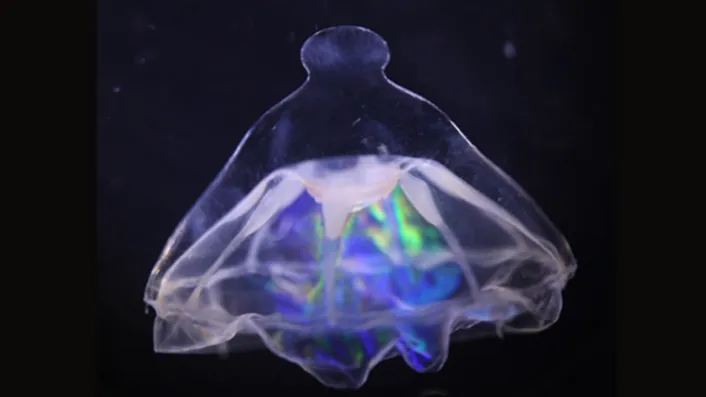
Mystery Unveiled: What Keeps Arctic Jellyfish from Conquering the Atlantic?
2025-07-29
Author: Siti
A baffling oceanic mystery has emerged, revealing that a unique barrier in the Atlantic is preventing certain deep-sea jellyfish from migrating from the Arctic. According to groundbreaking research, this phenomenon could reshape our understanding of marine life.
The Curious Case of Botrynema brucei ellinorae
The study focuses on Botrynema brucei ellinorae, a jellyfish species that thrives at astonishing depths between 3,300 and 6,600 feet (1,000 to 2,000 meters). Surprisingly, these jellyfish can be classified into two distinct groups based on the presence or absence of a knob on their bell-like structures.
Javier Montenegro, a biologist from the University of Western Australia and lead author of the study, shares, "This jellyfish has two different shapes depending on its habitat — one version sports a noticeable knob, while the other does not." This intriguing anatomical variance impacts their global distribution.
How Shape Influences Survival and Distribution
Jellyfish with the characteristic knob are found in all oceans and latitudes, whereas their knobless counterparts are confined to the Arctic and sub-Arctic regions. Montenegro and his team delved into over 120 years of observational and photographic records, coupling them with genetic analyses to map out the jellyfish's presence.
Their findings were published in the journal Deep Sea Research, revealing that knobless jellyfish from the Arctic share remarkably similar genetics with their knobbed relatives in the western Atlantic. Yet, the knobless jellies seem trapped in the icy waters.
A Barrier Beyond the Surface
The mystery deepens as Montenegro explains that this jellyfish's shape may determine their fate in the waters: a biological or geographical barrier, instead of a physical one, seems to restrict their movement into the Atlantic.
"The stark differences in shape, combined with genetic ties across regions, suggest the existence of a puzzling deep-sea bio-geographic barrier in the Atlantic Ocean," he states. This barrier is likely located within the North Atlantic Drift, a warm current extending from the Gulf Stream.
What Lies Beyond the Drift?
What exactly is deterring knobless jellyfish from venturing south? There may be predators lurking beyond the North Atlantic Drift, ones that these jellyfish aren't equipped to evade. The advantages of possessing a knob continue to be a mystery.
"The barrier may confine knobless specimens to the northern regions, while allowing knobbed specimens to travel freely further south," Montenegro notes.
Understandings of Oceanic Biodiversity
Interestingly, there’s no necessity for a similar barrier to restrict the knobless B. brucei ellinorae in the Pacific, as the Bering Strait already poses a natural blockade for various deep-sea creatures.
The discovery of this potential oceanic barrier linked to the North Atlantic Drift is a significant step forward in unraveling the mysteries of marine evolution and distribution. "The presence of these distinctive shapes within a singular genetic lineage underscores an urgent need to explore the biodiversity of gelatinous marine species further," concludes Montenegro.

 Brasil (PT)
Brasil (PT)
 Canada (EN)
Canada (EN)
 Chile (ES)
Chile (ES)
 Česko (CS)
Česko (CS)
 대한민국 (KO)
대한민국 (KO)
 España (ES)
España (ES)
 France (FR)
France (FR)
 Hong Kong (EN)
Hong Kong (EN)
 Italia (IT)
Italia (IT)
 日本 (JA)
日本 (JA)
 Magyarország (HU)
Magyarország (HU)
 Norge (NO)
Norge (NO)
 Polska (PL)
Polska (PL)
 Schweiz (DE)
Schweiz (DE)
 Singapore (EN)
Singapore (EN)
 Sverige (SV)
Sverige (SV)
 Suomi (FI)
Suomi (FI)
 Türkiye (TR)
Türkiye (TR)
 الإمارات العربية المتحدة (AR)
الإمارات العربية المتحدة (AR)